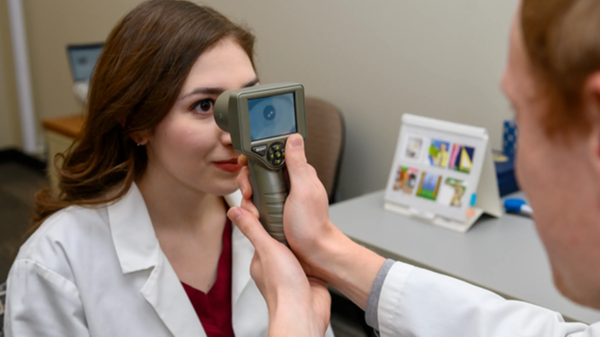The ease of monitoring the eyes’ sensitivity to light, according to this study, might be a potentially beneficial method for early autism diagnosis in young newborns. According to New Atlas, citing Neurological Sciences, further tests are presently being undertaken on a large sample of children following the creation of a simple tool to detect pupil responses.
We know that when [the intervention is implemented] as early as 18 to 24 months, there is a long-term impact on outcomes, according to Georgina Lynch, lead researcher at Washington State University. The intervention might happen at that critical period. The distinction between a child learning to talk and remaining nonverbal.
Many researchers are now looking into potential approaches for identifying ASD in newborns.
Many biomarkers, ranging from blood and urine tests to brain imaging, have been proposed, but only a few have been used therapeutically thus far.
Other study has focused on less invasive techniques of identifying ASD, and many scientists have looked to the eyes for easily measured biomarkers that suggest neurological abnormalities. Again, none of these potential eye trackers have been clinically evaluated, but there is a lot of hope that ASD will be easily discovered this way.
The current research focuses on a pupillary reflex, which is a basic reaction performed by the pupil in response to ambient light levels.
Previously, the modest pupillary reaction was utilised to assess significant brain damage. A University of Washington team produced a smartphone app in 2018 that utilises this biomarker to identify concussions.
Professor Lynch’s autism spectrum illness research grew out of her clinical practise, where she saw that children with autism have abnormally dilated pupils when exposed to bright light, and she wondered whether this may be an useful way to identify cases of autism.
Lynch said that cranial nerves anchored in the brain stem modify this system in the brain, and nearby cranial nerves impact the capacity to acquire speech and language, and that the pupillary light reflex assesses the integrity of this system, therefore it seemed appropriate to perform this operation. It is really straightforward to assess whether or not there are disparities between usual development and autism.
While Professor Lynch’s earlier research revealed that pupillary light reflexes might be used to detect cases of ASD, the new study emphasises the efficiency of a hand-held monocular irisometer. The trial was modest, with just 36 autistic children aged 6 to 17 compared to a control group of 24, but the results were encouraging.
The gadget will be tested on a wide sample of youngsters aged two to four years, according to Lynch and her colleagues.
This experiment is presently underway, and the results are expected to define criteria for pupillary reflection for a portable detector in the near future.
A novel way for detecting autism through the pupil

